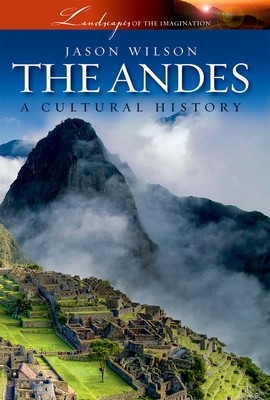
- We will send in 10–14 business days.
- Author: Jason Wilson
- Publisher: Oxford University Press, USA
- ISBN-10: 0195386361
- ISBN-13: 9780195386363
- Format: 14 x 21.6 x 2.1 cm, kieti viršeliai
- Language: English
- SAVE -10% with code: EXTRA
Reviews
Description
The Andes form the backbone of South America. Irradiating from Cuzco--the symbolic "navel" of the indigenous world--the mountain range was home to an extraordinary theocratic empire and civilization, the Incas, who built stone temples, roads, palaces, and forts. The clash between Atahualpa, the last Inca, and the illiterate conquistador Pizarro, between indigenous identity and European mercantile values, has forged Andean culture and history for the last 500 years.
Jason Wilson explores the 5,000-mile chain of volcanoes, deep valleys, and upland plains, revealing the Andes' mystery, inaccessibility, and power through the insights of chroniclers, scientists, and modern-day novelists. His account starts at sacred Cuzco and Machu Picchu, moves along imagined Inca routes south to Lake Titicaca, La Paz, PotosÃ, and then follows the Argentine and Chilean Andes to Patagonia. It then moves north through Chimborazo, Quito, and into Colombia, along the Cauca Valley up to Bogotá and east to Caracas. Looking at the literature inspired by the Andes as well as its turbulent history, this book brings to life the region's spectacular landscapes and the many ways in which they have been imagined.EXTRA 10 % discount with code: EXTRA
The promotion ends in 23d.13:52:13
The discount code is valid when purchasing from 10 €. Discounts do not stack.
- Author: Jason Wilson
- Publisher: Oxford University Press, USA
- ISBN-10: 0195386361
- ISBN-13: 9780195386363
- Format: 14 x 21.6 x 2.1 cm, kieti viršeliai
- Language: English English
The Andes form the backbone of South America. Irradiating from Cuzco--the symbolic "navel" of the indigenous world--the mountain range was home to an extraordinary theocratic empire and civilization, the Incas, who built stone temples, roads, palaces, and forts. The clash between Atahualpa, the last Inca, and the illiterate conquistador Pizarro, between indigenous identity and European mercantile values, has forged Andean culture and history for the last 500 years.
Jason Wilson explores the 5,000-mile chain of volcanoes, deep valleys, and upland plains, revealing the Andes' mystery, inaccessibility, and power through the insights of chroniclers, scientists, and modern-day novelists. His account starts at sacred Cuzco and Machu Picchu, moves along imagined Inca routes south to Lake Titicaca, La Paz, PotosÃ, and then follows the Argentine and Chilean Andes to Patagonia. It then moves north through Chimborazo, Quito, and into Colombia, along the Cauca Valley up to Bogotá and east to Caracas. Looking at the literature inspired by the Andes as well as its turbulent history, this book brings to life the region's spectacular landscapes and the many ways in which they have been imagined.

Reviews